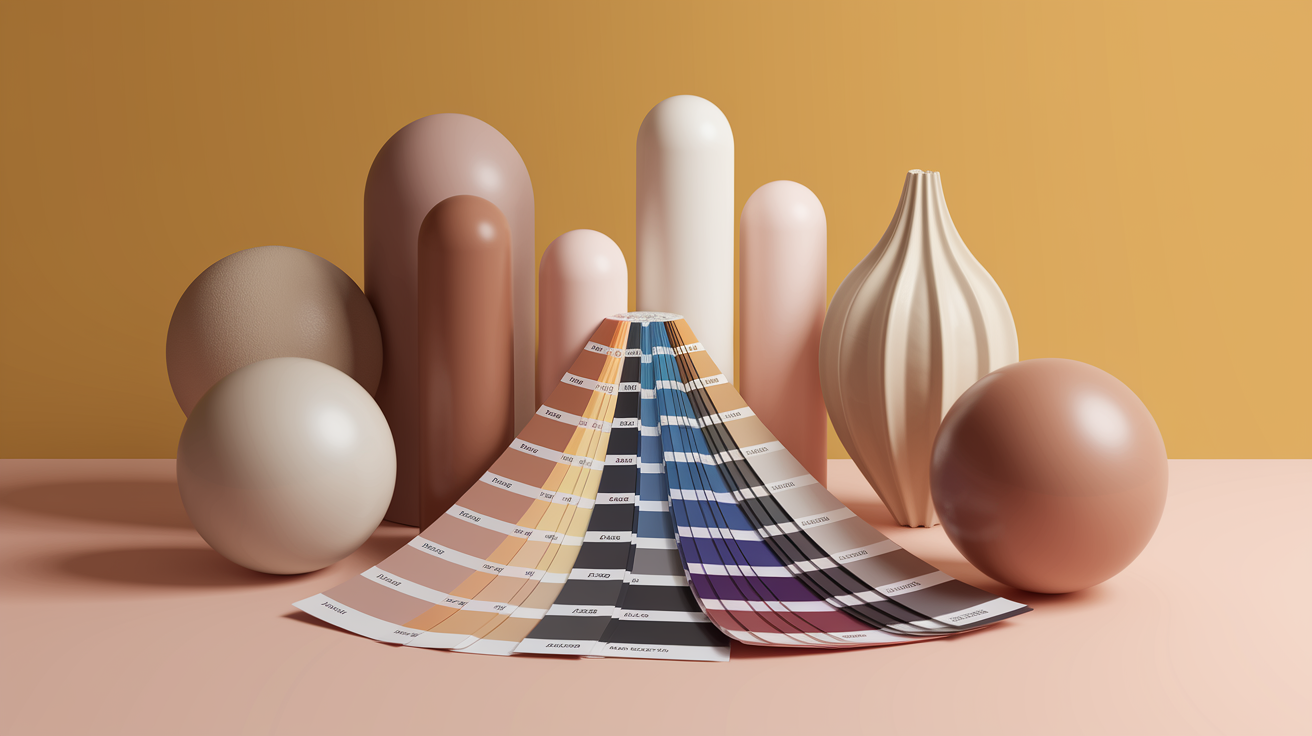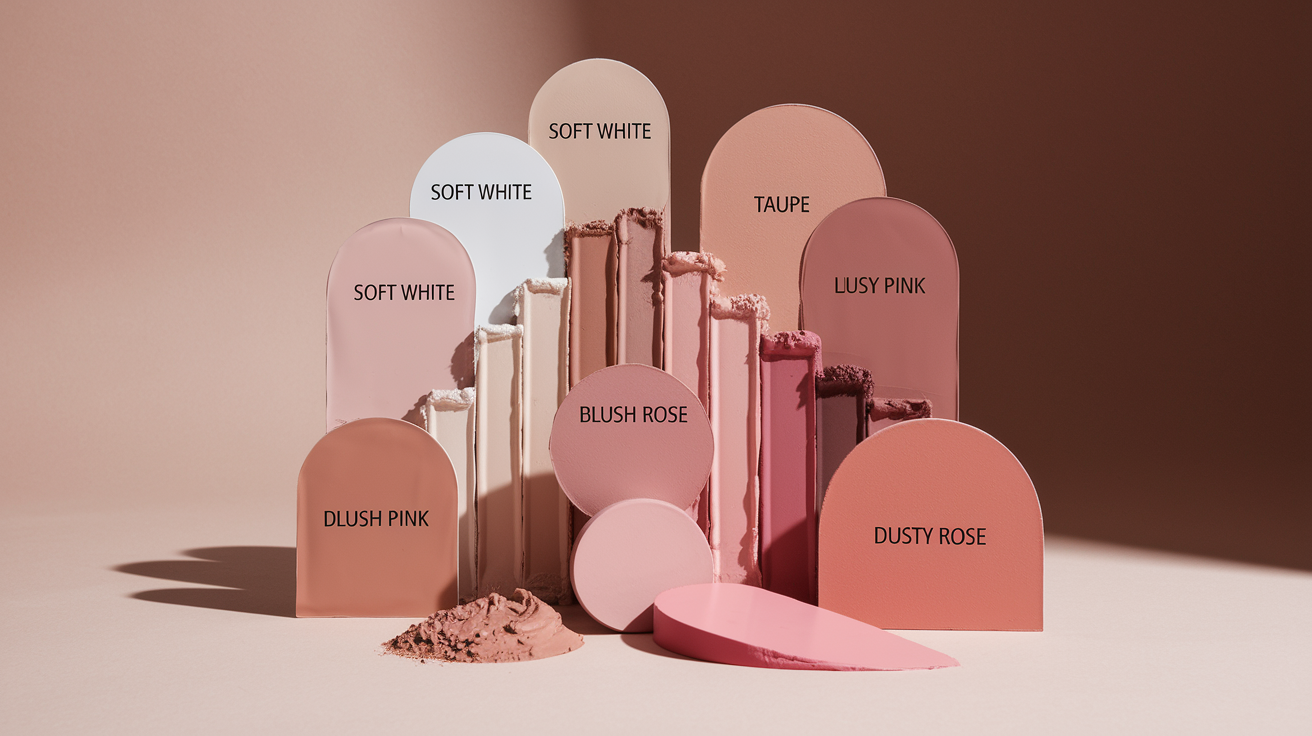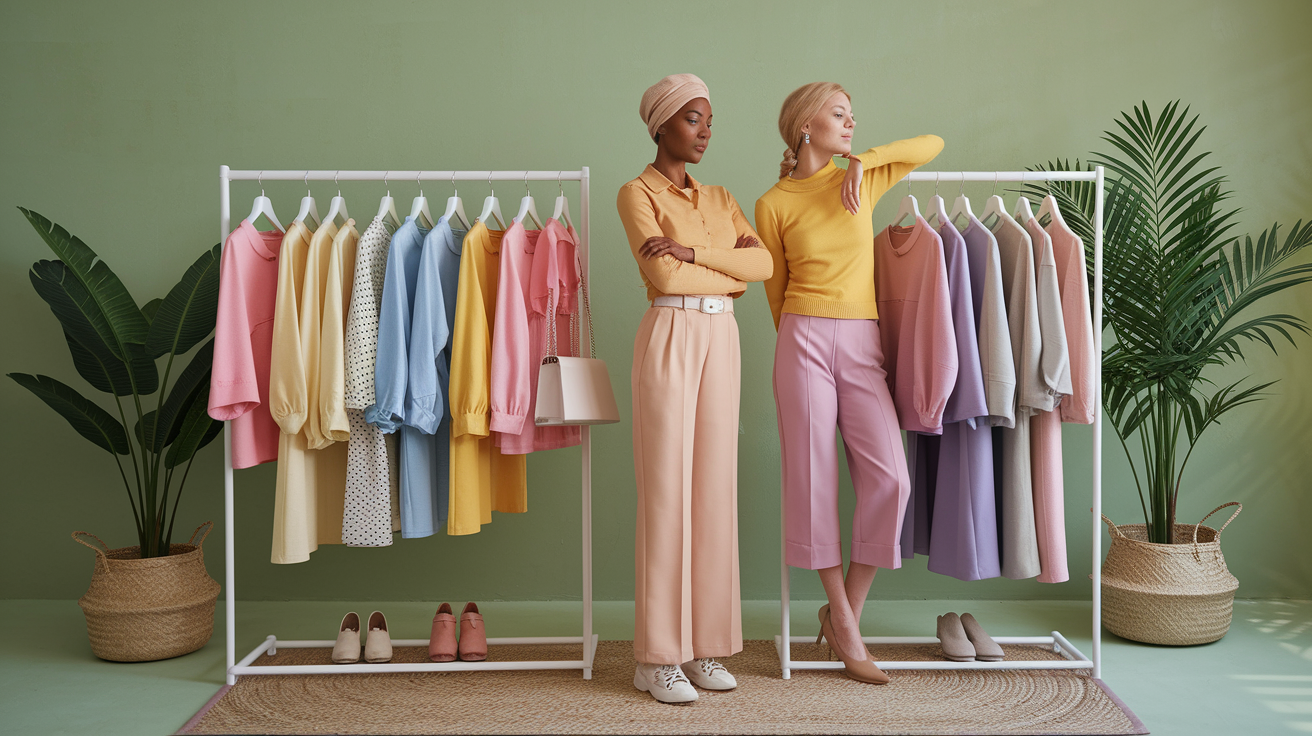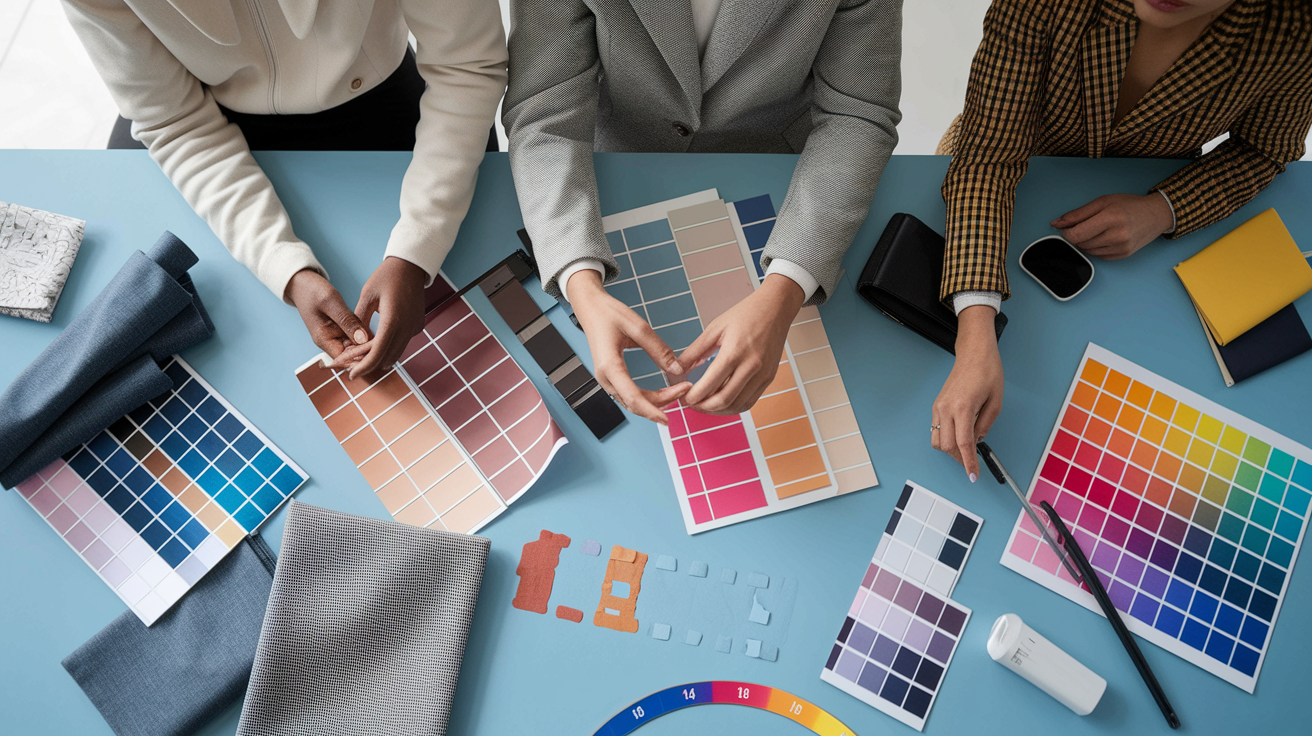A Complete Guide to Neutral Skin Tones & The Best Colors to Wear

Key Takeaways
- Identify your undertone to select your most flattering makeup, wardrobe and hair shade colors. Try basic vein, jewelry, and white tests in natural light to detect cool, warm or neutral undertones.
- Distinguish skin tone from undertone for precise color selections. Skin tone can vary with sun exposure, whereas undertone is constant and directs your optimal palette.
- Depend on neutral undertone colors. Aim for taupe, soft white, beige or muted earth tones that lack any strong yellow or pink pigments.
- Construct a versatile wardrobe with all-purpose neutrals first, then layer in warm- or cool-leaning accent colors. Maintain a mini color chart in your closet and sample new shades in natural light for clarity.
- For medium neutral skin tones, go lighter or deeper by season or event. Opt for neutral bases, peach or rose blushes and your go-to nude, berry or soft red lipstick.
- Activate confidence and harmony with color psychology. Wear calming neutrals on hectic days, insert punchy pops to accentuate, and cycle in different palettes based on your mood and surroundings.
🎨 Take Your Color Analysis Quiz
Ready to discover your complete color palette? Take our comprehensive color analysis quiz to identify your seasonal type and get personalized color recommendations that perfectly complement your natural features.
Take Color Analysis Quiz →Neutral undertone colors are hues with balanced base tones that neither skew warm nor cool. Employed in paint, textiles and design, they generate serene environments and allow disparate elements to feel cohesive.
Popular options are greige, taupe, warm beige, and dusty rust, usually hovering around 50–65% light reflectance for stable daylight. Coupled with wood, stone or matte metals they provide dimension without shine!
Ahead, discover how to select, try, and mix these colors effortlessly.
📚 Recent Articles
Understanding your undertone

Understanding your neutral undertone skin helps you select hues that complement your skin, hair, and clothing. It's not just your overt skin color; it's the warm undertones beneath the skin that remain constant, even if you're tanned or fade. With the perfect match, your overall complexion appears serene and luminous.
Skin tone
Skin tone refers to how light or dark your skin appears, which can change with sun exposure, age, or maintenance due to melanin levels. Genetics largely determine the spectrum you inhabit, but your overall complexion can shift lighter or darker over time. Understanding your skin undertones is crucial, as they remain constant despite these changes. For instance, you may have a warm skin tone with warm undertones, or a cool skin tone with cool undertones.
Undertones are not adjusted by the sun; they stay the same regardless of seasonal changes. Fair skin can exhibit warm undertones while deep skin may have cool undertones, illustrating that depth and undertone are distinct.
Melanin levels and familial traits dictate your skin tone, making it possible for siblings to have different tones. To accurately determine your neutral undertone skin, test a skin tone chart in natural light, matching your face and neck to find the best colors before identifying your undertone.
Skin undertone
Undertone is the subtle shade beneath the surface: cool, warm, or neutral. It radiates through the skin regardless of how light or dark you are, and it determines how colours sit on you. It's why certain shades radiate on you and others appear dull.
Cool undertones skew blue, pink or red. Warm undertones range from yellow to golden to peach. Neutral mixes both, often looking balanced. Olive skin is its own mix: neutral and warm with a soft green cast, which is why olive can wear some cool, warm, and neutral colors well.
Check undertone in daylight by a window. Try these quick tests: hold white paper next to your face; if your skin looks rosy or bluish, it's cool; if it looks golden or peach, it's warm; if it looks even, likely neutral. Pay attention to how you tan–if you tan quick and develop a golden or olive glow, you probably run warm.
The three types
There are three traditional undertones, cool, warm, and neutral. Cool favors blue-based shades: berry lip, rose blush, charcoal or navy clothes, silver jewelry. Warm loves golden hues that stop skin from looking dull: coral lip, apricot blush, camel or olive clothes, gold jewelry.
Neutral lies in the middle and can lean either way, hazel eyes frequently land here. Make a simple table for quick checks: list vein color (blue/purple for cool, green for warm, mixed for neutral), sun response, jewelry preference, and best whites (stark white for cool, cream for warm, off-white for neutral).
Let it inform makeup, hair tone and wardrobe edits.
What are neutral undertone colors?

Neutral undertone colors are those that flatter both cool and warm complexions, so they appear balanced and serene. They rest somewhere in the middle–no strong yellow or pink bias–so the eye perceives them as even.
Think taupe, soft white, beige, mushroom, greige and muted earth tones like sand, stone and clay. These colors work since they eschew pigmented tones and minimize chroma. You can mix warm and cool colors to achieve this balance.
For makeup, foundations labeled with "N" indicate a neutral undertone, handy with shade ranges that these days reach as many as 110 tones globally. An easy color analysis kit shows you which neutrals suit your skin, closet, and lighting best.
1. The vein test
Check veins on wrist in bright natural light. Test near a window of midday for a clear read.
Blue/purple veins indicate cool undertones. Green means warm. If you see both, or the color appears ambiguous, you may be neutral.
It's fast, non-invasive, a nice first cut. Compare both wrists to verify the answer. If they don't agree, your undertone could be close to neutral or olive, which can cast a slight green hue.
2. The jewelry test
Try silver and gold jewelry side by side: rings, earrings, necklaces, even watches. Play with mattes and shimmers.
If both metals look equally good, that indicates a neutral undertone. Cool skins prefer silver, warm skins prefer gold. Neutrals can flip flop styles with ease which is convenient for everyday wear!
Take pictures in daylight and inside and see which metal enhances your glow. Maintain a brief log so you notice trends as they emerge.
3. The white test
Hold a plain white cloth or paper up to your face in daylight. Say no to shadows.
If your skin turns sallow or pinkish, you're warm or cool leaning. Neutral skin won't appear too yellow or too rosy beside pure white. Do the same with off-white or cream and observe minor variations.
A lot of neutrals look great in soft white. This test helps with lip color picks: classic nudes, dusty roses, and muted mauves often sit well on neutral undertones.
4. Sun reaction
Even neutral skin will tan or burn a little, but not as much as warm or cool skin. It can lean warmer or cooler post sun.
Observe how your skin changes from week to week. Olive skin can mix neutral and warm with a special green undertone, so take note there, too.
Apply broad spectrum sunscreen everyday. Healthy skin absorbs colors more correctly.
5. Your natural palette
Neutrals can rock both warm and cool palettes, but muted, balanced shades tend to glow. Think camel, slate, smoke, soft navy, and oatmeal.
Construct a mini palette you believe in for attire and cosmetics. Include a neutral-toned trench, ivory tee, taupe-tinted shoes and a greige sweater.
In makeup, seek out "N" foundation, soft taupe brows and mid-tone eyeshadows. Test across color families: cool blues, warm terracottas, gentle greens.
Remember what compliments, jot down what battles your complexion.
The ultimate neutral skin tone color palette

A clean palette allows those neutral undertones to come through and look fresh, even and cohesive across clothes, makeup AND accessories! Stick to soft white, taupe, blush pink and dusty rose for high mileage. Add bands of warm-leaning and cool-leaning tones to dial in. It's balance that elevates your natural complexion without chatter.
| Palette group | Core colors | Why it works | Where to use |
|---|---|---|---|
| Universal | pure white, navy, charcoal, soft blush, taupe | steady contrast, low risk | shirts, suiting, knits, lipstick, nails |
| Warm-leaning | camel, honey beige, soft gold, chocolate brown, dusty rose, marsala | adds gentle glow | coats, bags, bronzer, eyeshadow |
| Cool-leaning | dove gray, icy lavender, muted mauve, lilac, light emerald, azure | adds quiet clarity | tailoring, scarves, eyeliner, gloss |
Neutral skin tones can wear warm and cool shades with ease, and even toggle metallic—gold and silver both flatter. Makeup remains balanced with a blend of warmth and coolness throughout blush, bronzer and highlighter. Tweak seasonally, as undertones can shift with sun or irritation.
Universal colors
1. Pure white: crisp and clean, it frames the face without glare. Shirt, tee and dress safe in breathable cotton or silk.
2. Navy: deep but not harsh, sharp for suits, denim, and liner, pairs with camel, azure, and blush with no fuss.
3. Charcoal: softer than black, great for trousers, coats, and knitwear. Supports both warm camel and cool dove gray.
4. Soft blush: a whisper of pink that reads neutral; perfect for tops, lipstick and nails; illuminates fatigued skin.
Hold these as staples for utmost versatility—imagine a navy blazer, charcoal trousers, and a soft blush knit that complements warm undertone skin. Create a cheat sheet of your best neutral shades and tack it to the inside of your closet door.
Leaning warm
Camel, honey beige and soft gold bring in warm but calm hues that don't lean orange. Chocolate brown, dusty rose and marsala deepen the range for evening or cool months.
Pair with earth tones like olive, stone or sand for a subtle radiance. Steer clear of brassy or pumpkin-heavy tones that muffle your equilibrium. Mix warm neutrals with navy or pure white for easy, and accessorize with soft gold jewelry. Silver can hang around too. Mixed metals read chic on neutral skin.
Leaning cool
Dove gray, icy lavender and muted mauve provide the sleek, cool edge that doesn't overwhelm. Lilac, light emerald and azure will lift the eye area and brighten teeth.
Mix these with universal anchors—navy suit, dove gray coat, pure white tee—for a modern twist. Avoid super ashy or blue-heavy tones that suck the color, and try near a window. True red and bright blue come across fresh on neutral undertones.
Building your wardrobe
Start with universal bases: navy blazer, charcoal trousers, soft white shirt, taupe knit. Accented with warm or cool neutrals depending on mood and setting. Incorporating a neutral undertone skin approach can enhance your overall complexion.
Use a capsule approach: 8–12 pieces that mix into 30+ looks. Keep a mini palette card in your closet with fabric swatches and write down your foundation shade—pick "neutral" labels first, then warm or cool as seasons change, especially for those with warm skin tones.
For makeup, mix in some cool-leaning blush and soft bronzer with a neutral highlighter. Reserve watermelon, dusty rose, and dove gray for immediate picks-me-ups, ensuring that you select makeup shades that complement your skin undertones.
Beyond the basics for medium neutral skin tone

Medium neutral skin sits in the middle: a balanced mix of warm and cool undertones in a medium depth. This equilibrium allows you to experiment with more colors than most, from icy taupe to rich cinnamon. It's not just about pastels or dark colors — both can look luminous.
Adjust saturation with season or setting – soft in daylight, deeper at night – for the most elegant effect. The color seasons get a little fuzzy here since some medium neutrals display a blue or "colorless winter" cast on the surface, and others are tan or beige, like a soft summer or soft autumn.
Unique advantages
You can rock warm and cool families with ease. Imagine olive, camel, sand and stone one day, slate, navy, charcoal and pewter the next. It's a rare and handy range.
Clash is rare with mainstream makeup and fashion colors. Most "office neutrals" and "weekend basics" fall comfortably on you, speeding up your daily decisions.
Trendy or classic both do. A sharp cobalt blazer, a quiet mushroom knit, a cream trench or copper slip dress — all can read polished with the right finish. Take advantage of this inherent simplicity to try out new stripes and textures and prints without trepidation.
Approach versatility as a lab. Test out satin vs. Matte, cool metals vs. Warm, fine stripes vs. Bold blocks. Jot down notes on what under sun, shade, evening light wins.
Color challenges
Neon and hyper‑bright colors overpower your natural harmony. Highlighter yellow, electric fuchsia, and safety‑cone orange have a tendency to bounce off the skin and pull it off tone.
On the flip side, dusty or muddy mixes can suck the life. Over-mutued browns or stale mauves or flat greys can read dull, particularly if you have that subtle muted undertone underneath.
Try in natural light by a window, NOT just inside. Take it outside for a fast phone pic. Your eye misses shifts the camera picks up. This is helpful when hair or eye color introduces prejudice.
Hair is less important for season than people believe, but eye contrast will guide you. If you adore a bright shade, balance it with grounding neutrals. Try cobalt with stone or magenta with oat or chartreuse with warm beige to remain harmonious.
Makeup selection
Select foundations labeled 'neutral' or 'medium beige'. When in doubt, swatch three stripes from jaw to neck and select the one that disappears in daylight. This honors the 110 shade intricacy you find at international brands.
Blush in peach, rose or mauve mimics a true‑skin flush. Go with sheers for day, heavier pigment for photos or night.
For eyes, keep it neutral but have fun playing contrast with your eye color. Brown eyes pop with cool taupe, pewter or soft plum. Green or hazel like warm bronze or khaki. Deep blue goes nicely with caramel or slate. Finishes matter: satin lifts, matte grounds.
Lips are the low hanging fruit. Beige or pink based nudes, gentle berries, and soft reds (brick‑rose, anyone?) suit most days.
If you pursue seasons, be aware medium neutrals border soft summer and soft autumn territories – employ that knowledge as a guideline, not a mandate. It's a subtle art, so plan to experiment with colors and modify by lighting, mood and environment.
The psychology of your color choices

Sporting hues that complement your neutral undertone skin enhances your aura and confidence. Balanced palettes, especially those with warm tones, soothe the eye and the mind. Keep tabs on how each color makes you feel, then construct a wardrobe that reverberates those rhythms across clothes, makeup, and even rooms at home.
Projecting confidence
Select colors that illuminate your skin tones but without overpowering them. If your neutral undertone stakes out the middle ground, charcoal, taupe, stone, and soft navy tend to be flattering, while true blue lends calm and contrast.
Peach or pink makeup warms the face and blurs edges for a young, radiant appearance. Let your clothes resonate with you. If you're minimalist, clean lines in black, white and gray (warm or cool versions) feel honest.
If you're daring, sprinkle in orange, yellow or paprika as targeted blasts. These vibrant, sunny notes come across dynamic and confident. Use accents intentionally. A red scarf, a coral lip, or a saffron bag gently call attention to your favorite features—eyes, smile, posture—without screaming for it.
Dark colors like black or navy often indicate authority and polish, so ground brights with them. Be consistent to appear composed. Establish a foundation palette – say, navy, stone, ivory – then echo it from jackets to shoes to bags.
Combining finishes (matte, sheen) creates visual interest while maintaining the same message.
Creating harmony
Select colors that harmonize with your coloring so there's nothing competing for attention. Stone, greige, and soft cocoa usually fall on neutral undertones, while true white or inky black send the vibe toward crisp or sleek.
Avoid clashes that jar the entire look. Very cool icy gray with a warm camel can feel off. Instead, match temperature. Even neutrals live on warm–cool lines, and that small shift changes the vibe of your outfit or space.
Work in tones, not in noise. Layer light, mid and deep versions of one color—sand, khaki, olive—for a depth that feels tranquil. It scales to interiors, too, crafting rooms that calm rather than cacophony.
Tie it all together with accessories. Belts and shoes and scarves in related shades stitch pieces into a whole with minimal effort.
Emotional impact
Colors have emotions. Blue tends to indicate calm and concentration. Red tilts to power and ambition. Pink and peach come across gentle and inviting, while green calms like a peaceful stroll outside.
On high-anxiety days, stretch for whispering neutrals—stone, dove gray, soft cream—to reduce visual tension and help you exhale. When you need lift, add upbeat notes: sunny yellow trim, an orange tee, or a coral lip.
Keep them by the face for immediate impact. Change palettes with seasons and environment. Culture matters too: red can mean prosperity in North Indian weddings, while white signifies purity in South Indian weddings.
Of course, personal memories direct taste, so pay attention to which hues conjure up positive emotions and surround yourself with them.
Common mistakes to avoid

Neutral undertones, which can be found in those with a neutral warm skin tone, sit between warm and cool, so minor errors can easily push a look from balanced to flat. Think in terms of harmony: color, contrast, texture, light, and context all matter.
- Chasing trend colors that fight your undertone
- Wearing one color family only (all beige, all grey, all black)
- Ignoring fabric texture and finish when judging a shade
- Testing foundation indoors under harsh or yellow light
- Treating wrist veins as the only undertone test
- Confusing skin tone with undertone, or overtone with undertone
- Forgetting genetics, skin conditions, and seasons can sway appearance
- Wearing extreme light–dark pairings daily without soft transitions
Muted colors
Overly muted hues—dusty mauve, drab taupe, stale olive—suck the life from neutral complexions, making them appear fatigued, not classic. The danger increases with matte, heavy fabrics that soak up light.
A flat camel tee in heavy cotton can sound boring, but that same camel in fluid silk exhales. Balance counts. Pair a muted base with a crisp accent: stone with sapphire, mushroom with deep teal, greige with oxblood.
Even a skinny belt, a lip tint, or a black watch strap breathes life without shattering the serenity. Light changes results. Test muted colors by a window at noon, then dusk, then cool LEDs.
If a color fades into your skin or goes ashy, scale it back to accessories. Put muted shades around, not on your mug. Allow them to anchor the style—pants, jackets, gentle sweaters—while a single bold or deeper toned article takes charge.
Extreme contrasts
Very dark beside very light can split the face and rob softness from neutral undertones. Black-and-white blocks, harsh optic stripes and hard color-block tees tend to scream louder than your features.
Use medium contrast blends. Soft white on charcoal, stone on navy, cream on cocoa make it easy and still read sharp. Soften jumps with gradients or layers: slate tee, graphite overshirt, black jacket, ivory shirt, oatmeal vest, camel coat.
Edges melt, and the eye sweeps. Reserve high contrast for a statement—coat or bag or graphic knit—not head to toe.
Ignoring texture
Texture changes color. Shiny satin illuminates and cools a color, brushed wool warms and mutes. That's why the same 'beige' in silk vs flannel won't appear the same on skin.
Combine finishes for depth. Matte knits with a satin scarf. Smooth leather shoes with a heathered dress. This provides texture without bright hues.
Steer clear of rough, heavy weaves in tricky shades close to the face – they can cast shadows and bring out redness or irritation. If skin is flaring, opt for smoother fabrics and a bit brighter colors.
Makeup is the same way. Team matte bases with a soft-sheen blush, or satin foundation with a matte bronzer to maintain equilibrium.
In practice, avoid common pitfalls: skin tone does not decide undertone. Undertone varies across light to dark skins. Seasonal sun can alter how undertone presents itself, so retest come summer and winter.
Wrist veins provide hints, not judgments. Try foundation in natural light, preferably outside, and blend along the jaw. Genetics form undertone, while irritation or conditions can offset it that day.
Don't confuse overtone (surface color) with undertone (base cast), and remember the broad spectrum of shades within each tone band.
Conclusion
To sum, neutral undertones provide tremendous versatility. Cool taupe, soft stone, warm sand, true olive Every shade can brighten your complexion and spirits. A smoked out beige tee can look sharp and crisp as well. A cocoa knit distracts with ease. Consider actual utilization. A stone blazer for work. A driftwood dress for a low key night. A clay scarf to warm a gray day. Little swaps send big signals.
To keep cutting-edge, try in brilliant light. Look close to your face. Pay attention to your skin! Trust your eye. Write down the wins and flops. Construct a close-knit collection you'll put on repeat.
To play next, experiment with two fresh shades this week. Share what connected and missed. Let's be real.
Frequently Asked Questions
How do I know if I have a neutral undertone?
Examine your veins in sunlight to determine your skin undertones. If they don't appear blue/purple or green, you might have a neutral warm skin tone. Gold and silver jewelry both look great on you, indicating a balanced look. If foundations labeled as 'neutral' blend effortlessly, you likely have a neutral undertone skin.
What colors work best for neutral undertones?
Balanced shades work well for neutral undertone makeup: soft taupe, warm gray, beige, camel, navy, charcoal, and true reds. For color pops, consider warm skin tones like teal, emerald, royal blue, and berry. Avoid extremes—too yellow or too pink.
Is a neutral skin tone the same as olive?
Not necessarily. Olive complexions will usually have a green or gray cast and can still exhibit warm or cool undertones. Neutral undertone skin refers to balanced undertones without a heavy tilt. Try it on with foundation shades and fabric swatches. If neither warm nor cool palettes suit you better, you are probably neutral rather than olive.
What is an ultimate neutral skin tone color palette?
Ivory, stone, taupe, camel, navy, charcoal, and chocolate are excellent choices for those with a neutral undertone skin. Add accents like teal, cobalt, burgundy, berry, emerald, and soft blush to create a balanced look that complements warm skin tones.
How should medium neutral skin tones choose colors?
Use mid-depth neutrals like mocha, warm gray, olive-khaki, and deep navy to complement your neutral undertone skin. For accents, try saffron, peacock blue, raspberry, and forest green, avoiding pastel colors that can wash out warm skin tones.
Do colors affect how I'm perceived?
Yes. Blues communicate reliability and serenity, while reds convey energy and confidence. Neutrals like gray and navy exude professionalism, and selecting makeup shades with warm undertones can enhance your overall complexion, creating a balanced look.
What are common mistakes with neutral undertones?
- Choosing foundations too yellow or pink
- Overusing pastels that dull the complexion
- Ignoring fabric texture and finish
- Skipping contrast balance in outfits
Shoot for neutral undertone colors, good contrast, and daylight checks.